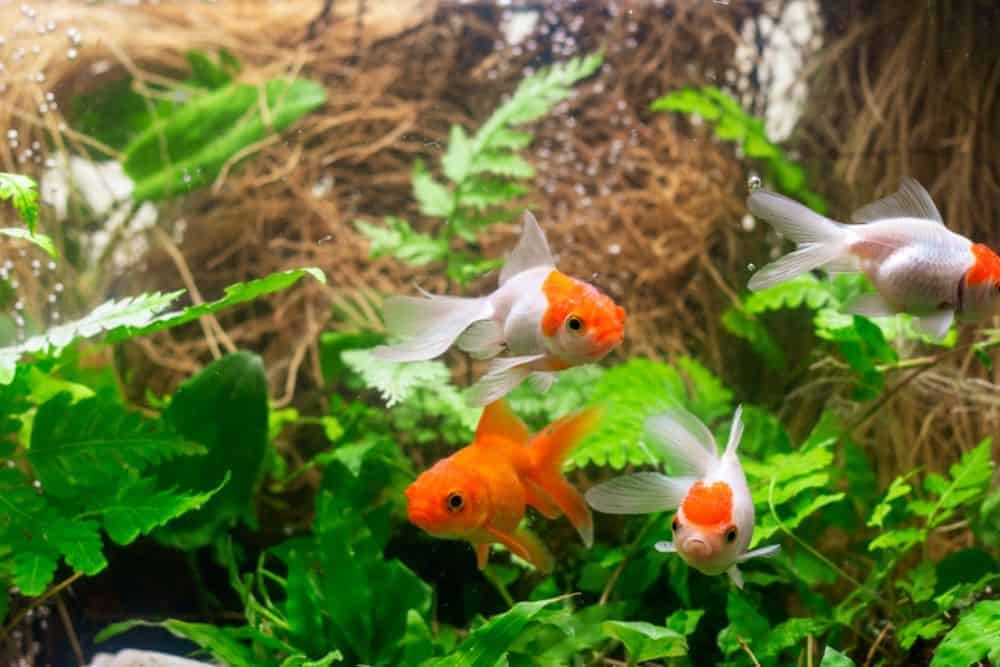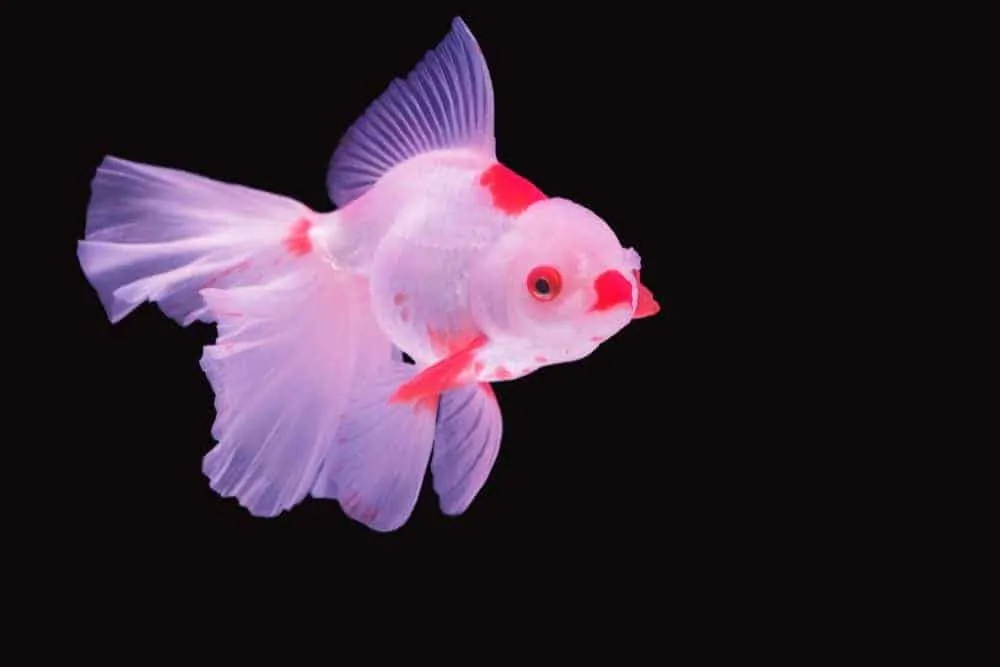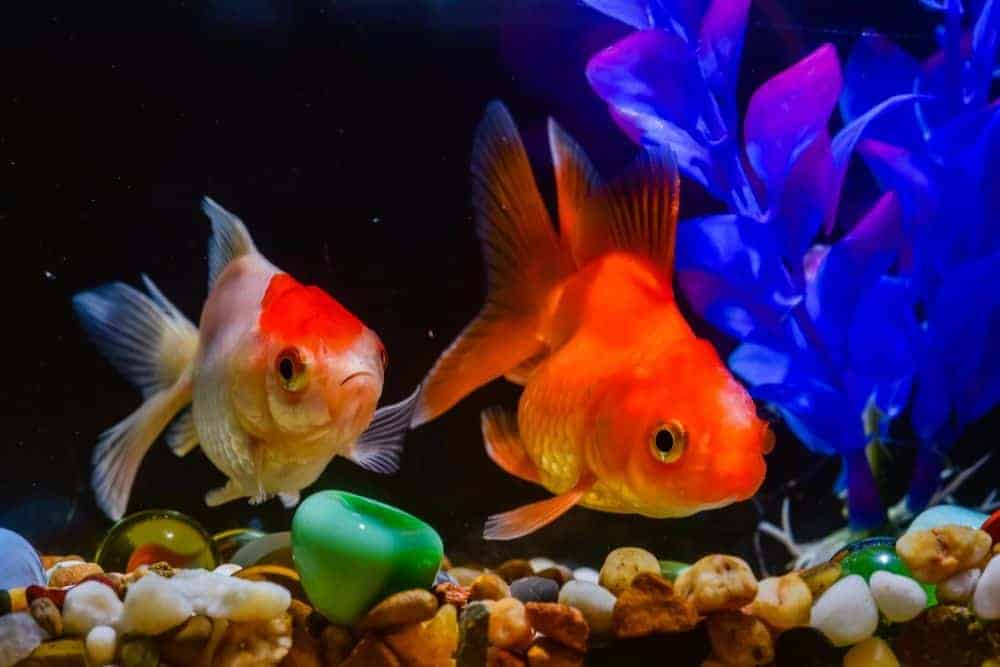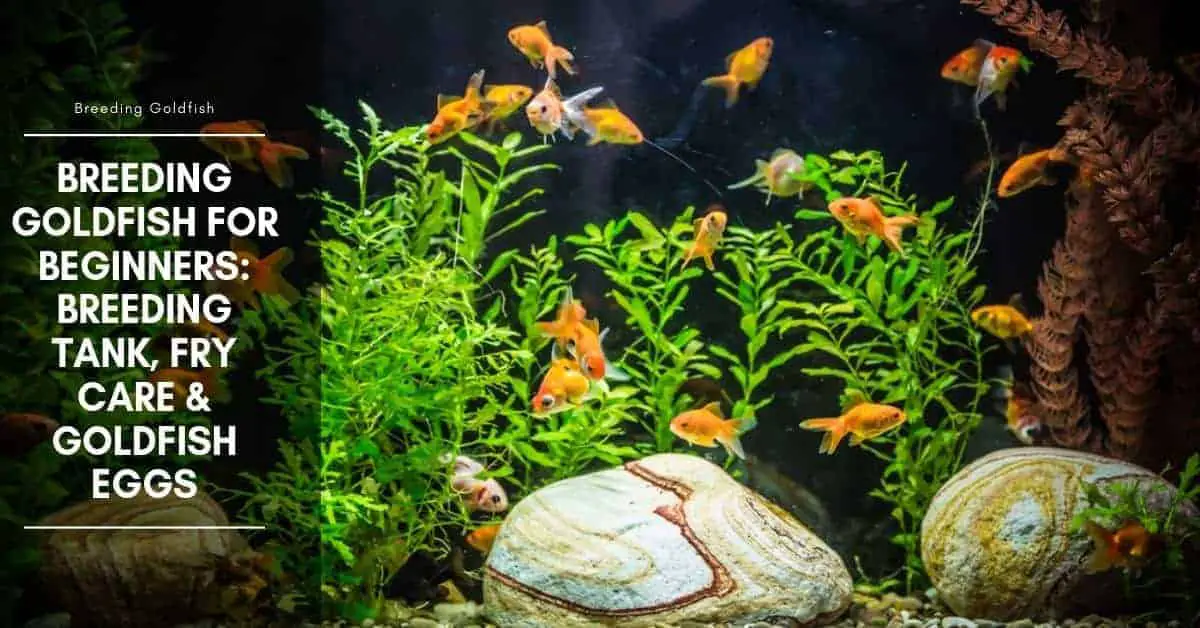If the thought of having new baby goldfish is appealing to you, then you will need to learn all there is to know about achieving the best results when breeding your goldfish and having goldfish eggs in the tank.
Naturally, when it comes to breeding goldfish in an aquarium, it takes more than sticking a male and female goldfish together; it takes careful planning, patience, and some serious dedication. Nevertheless, if you are determined to make breeding goldfish a new hobby, here are all of the basics of what beginners need to know to make the ideal fry.
At what age can goldfish start breeding?
The earliest that you can start breeding Flipper and “Flipperette” is at the ripe old age of 2, but many goldfish experts believe that it is better to wait until they are at least 3-5 years of age, to ensure the best breeding results.
Once your goldfish is old enough, carefully select the best-looking fish. You won’t want to limit yourself to only two goldfish, because it is recommended that if you want the best results, you should have two males for one female when breeding. For this reason, it is a good idea to select at least 6 goldfish.
How can I tell the sex of my goldfish?
One way of determining the gender of your goldfish is through vent sexing. Vent sexing is the method of distinguishing sex by observing the appearance and shape of the anal opening. Sounds fascinating does it not? Bet you were just dying to observe your fish’s butt! All kidding aside, this is a difficult process that is best left to experts.
However, if you are determined to give it a try, you will need to purchase a good magnifying glass, like those used by jewelers, as well as make sure you have good lighting. The vent is the opening located beneath the anus and above the anal fin and is where sperm or eggs are excreted during spawning. The vent of a female is substantially larger in diameter than that of a male and is usually darker in color (depending on the breed of goldfish).

What are the signs to know if my goldfish is going to have babies?
You will know if your goldfish is going to have babies by observing the above-mentioned spawning characteristics in your fish. However, if you want your goldfish to breed and have their offspring survive, you will need to follow certain criteria to ensure that you achieve the best breeding results.
You will also need to take specific precautions after the spawning is complete in order to protect the eggs and newborn fry from being eaten by their ever-hungry parents.
How do I successfully breed goldfish?
After you have made the decision to breed your goldfish, you will then need to begin planning almost one year in advance before the actual spring spawning season takes place. First, you will want to remember to pick the best-looking goldfish and don’t limit yourself to two.
You don’t need to select specific female fish to attract male fish when breeding, or vice versa, you will simply want to make sure that you have two males for every one female to achieve the best results. To avoid accidents, once you have your breeding goldfish selected; separate the males from the females during the pre-spawning season, until you are ready to breed them.
Water temperature for goldfish breeding
In order to breed goldfish, you will need to manipulate the natural cycle that would occur if they were living in a pond or in the wild. In the fall, feed your selected breeding goldfish a variety of live foods such as brine shrimp, chopped worms, and duckweed, along with good dry food.
This will help to produce quality eggs when it comes time for the spawning season. As fall continues to creep by, reduce the water temperature in your fish tank to 35-40 ºF (2-6 ºC) for two months, and begin to feed your goldfish very little about three times a week.
After the two months are over, gradually begin to raise the water temperature until it reaches 50-60 ºF (10-17 ºC). This stage is what is known as the pre-spawning period, which lasts for about four to six weeks. During this period you will want to slightly increase their food, but still, continue to feed them light amounts only three times a week.
Once the spawning time arrives, you will then want to raise the temperature so it is in between 65 -70 °F (18-22 °C). As soon as the temperature is raised these extra few degrees you will notice a change in your fish.

Preparing the breeding tank
Once your goldfish are ready to go, you will need to prepare for them a nice little breeding pad, where they can happily do their thing. For best results, use a tank that is at least 20 or 40 gallons (75 or 150 liters) in length.
Basically, the size you will need depends on the number of fish you are breeding, as well as the number of plants and spawning mops you choose to place in the tank.
You should stock your goldfish tank with a variety of nonabrasive aquarium plants, such as artificial spawning grass, floating rooted plants, bottom plants, ponga fronds, soft willow, and spawning mop.
API STRESS COAT Aquarium Water Conditioner 16-Ounce Bottle
29% OffAPI STRESS ZYME Freshwater and Saltwater Aquarium Cleaning Solution 16-Ounce Bottle
API ACCU-CLEAR Freshwater Aquarium Water Clarifier 4-Ounce Bottle
12% OffYou can make the spawning mop yourself or purchase it along with the other required plants at a pet shop. If you choose to make spawning mop, make sure you use acrylic yarn, and clean the pieces first in hot water, to remove any excess dye or germs, and let them dry before placing them in the tank.
You will want to place a sufficient amount of these plants in the breeding tank, to not only entice your fish but also to serve as good hiding places for the sticky eggs that will be dropped all over the tank during spawning. This will also make it easier for you to move the eggs to safety once the breeding session is over.
How do goldfish reproduce?
If your breeding tank is ready to go, reunite your separated goldfish and watch them work their magic. Usually, breeding will begin after a storm or when there is a dramatic change in barometric pressure. This being the case it often occurs in the morning and can last anywhere from 3 to 6 hours.
You will notice that when the goldfish are ready to reproduce, the fish remain close together; they will rub against the spawning mops, as well as each other.
Male goldfish will eventually begin to chase after the females and nudge the female’s anal and caudal area. At this point, the females will begin to release their eggs, and the males will follow suit and release their milt (sperm) to fertilize the eggs.
Goldfish eggs
Depending on the size and state of the female, approximately 500 – 2000 eggs will be released during the breeding period. All eggs will stick to the first thing they touch even the ones that are infertile. You will be able to tell the difference between infertile eggs and fertile eggs by their appearance and color.
Infertile eggs will turn white/opaque and fuzzy within the hour, whereas fertile eggs will be a yellow-amber color, and are approximately .01 of an inch (approximately 1.5 mm) in diameter. You will want to move all infertile eggs as soon as possible, because they will quickly begin to decay, and can affect the health of the fertile eggs.

Taking care of the small fry
Once breeding has been completed, remove the eggs and spawning mops from the tank to save them from being eaten by the adult fish and place them in another tank that has the exact same temperature of wellaerated water.
For eggs to hatch within 3 to 5 days the water temperature should be in between 65-70 °F (18-22 °C). You will want to keep this temperature for a total of 8 or 9 days, to allow the newly hatched ¼ of an in. (just over ½ of a cm) fry time to absorb all of the nourishment from the yolk sacs attached to their bellies.
Any of the infertile eggs that do not hatch (remember they will look fuzzy and white/opaque in color, unlike the pale amberyellow of fertile eggs), should be removed immediately from the tank to ensure harm does not come to the newborn fry. Once removed, add about 10 drops of 1% Methylene Blue per 2 gallons (10 liters), to control any growing fungus.
You will not begin to feed the fry until they have finished their yolk sacs (usually after 3 days from hatching). However, you will want to immediately feed them after this time with newly hatched brine shrimp, or with sifted daphnia.
Be careful not to overfeed them, and immediately remove any uneaten food from the tank, because any food that is left to decay will kill the fry, due to the fact that they are highly prone to sickness at this fragile stage of life.
This being the case, you will also want to make sure that you are using a sponge filter that has low turbulence to keep the water environment of the tank healthy. In addition, you may wish to keep all of the fry produced, or after two weeks, you can select and remove any unwanted fish with the help of a magnifying glass.
How do I remove goldfish eggs from the tank?
Eggs can be removed from the plants or substrate manually. Ideally, eggs should be moved to a separate container first, and then the water from this container can be siphoned back into your aquarium.
This way you will prevent introducing more eggs back into your tank via the siphon. If there are no other fish in your tank, you can remove the eggs directly from the plants or substrate and then use a siphon to empty the infested water into another container.
This way you will be certain that no eggs are missed if you decide to put them back in your tank. If there are other fish in your tank, egg removal is not as simple.
Do I need to remove the eggs from the tank?
No. I have had my goldfish laying eggs for about a year now and everything is just fine. You should not remove the eggs from your tank unless you want to hatch them or you think one of your fish will eat the eggs.
A lot of people say that they take their fish out before they lay the eggs, but this isn’t always necessary. Some of my fish have laid eggs on the gravel, and a couple of others in the plants, and some right next to the water filter.
Their favorite places are when they lay them on top of a plant or just by themselves on top of the gravel. I like it because then you get to see how many goldfish you actually have.
Why goldfish eggs are white?
The eggs of the goldfish are white because of a pigment called pteridine, like human skin.
Pteridine is a nitrogen-containing derivative of the amino acid tryptophan. The pteridine forms yellow and orange pigments in fish when mixed with xanthophylls, another compound that is found in the skin.
Do goldfish eggs float?
Like many other species of fish, there are some times in which eggs will float around in the water column as well as sink to the bottom of your aquarium.
In some cases, the floating of the goldfish eggs can be due to a variety of reasons that will not directly affect your fish in any way if you are keeping them in a proper setup.
Although this is the case, there can be other issues that are responsible for causing your goldfish eggs to float.
One of the most common reasons why your goldfish eggs may start to float is due to a lack of oxygen and or carbon dioxide within the water column. This will often occur if you have live plants in your aquarium as they will be absorbing both of these in the water column.
If you have a lack of these key elements within your aquarium, then it will cause your eggs to rise above the surface as well as sinking at a rapid rate. The only way to remedy this issue is by removing the fish eggs you find that are floating or not adhering to the water column.
How long does it take for goldfish eggs to hatch?
about 2-10 days, if the eggs are fertile and healthy. If you don’t know their fertility rate, give them at least 10 days to hatch.
Discard the eggs that are not fertilized and try again.
How do you tell if goldfish eggs are fertile?
You can crush one of the eggs and see whether it has a yolk.
If the egg has a dark spot in the center, it is most likely fertile.
looking for dark spots or blood vessels indicating fertility are signs of good eggs. If you do not know their fertility rate, give them at least 10 days to hatch.
How can I increase their hatching chances? You should keep the temperature of the water between 22 and 30 degrees C. Higher or lower temperatures will slow down the process of hatching.
The higher you keep your water temperature, the faster they should hatch.
Summary
Remember, as long as you maintain high water quality in your fry tank, feed them plenty of good food, and give them lots of room to swim, you will be amazed at how fast your fry mature and grow into fine young goldfish.
You will be able to tell if your goldfish are ready to spawn is by observing the change in your fish’s appearance. If you want your goldfish to breed and have their offspring survive, you will need to follow certain criteria to ensure that you achieve the best breeding results.
You will also need to take specific precautions, after the spawning is complete, in order to protect the eggs and newborn fry from being eaten by their ever-hungry parents.

Hi, my name is Sean, and I’m the primary writer on the site. I’m blogging mostly about freshwater and saltwater aquariums, fish, invertebrates, and plants. I’m experienced in the fishkeeping hobby for many years. Over the years I have kept many tanks, and have recently begun getting more serious in wanting to become a professional aquarist. All my knowledge comes from experience and reading forums and a lot of informative sites. In pursuit of becoming a professional, I also want to inspire as many people as I can to pick up this hobby and keep the public interest growing.
Read more about Sean.
Please join also my Facebook group.




















